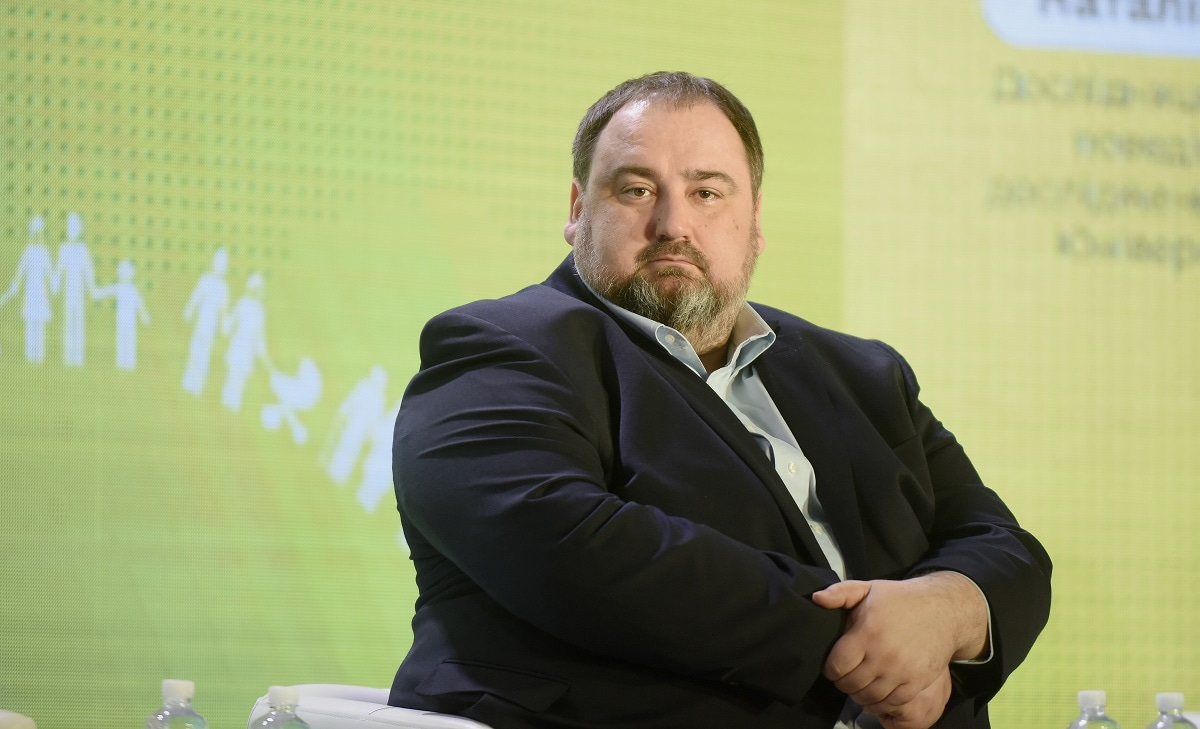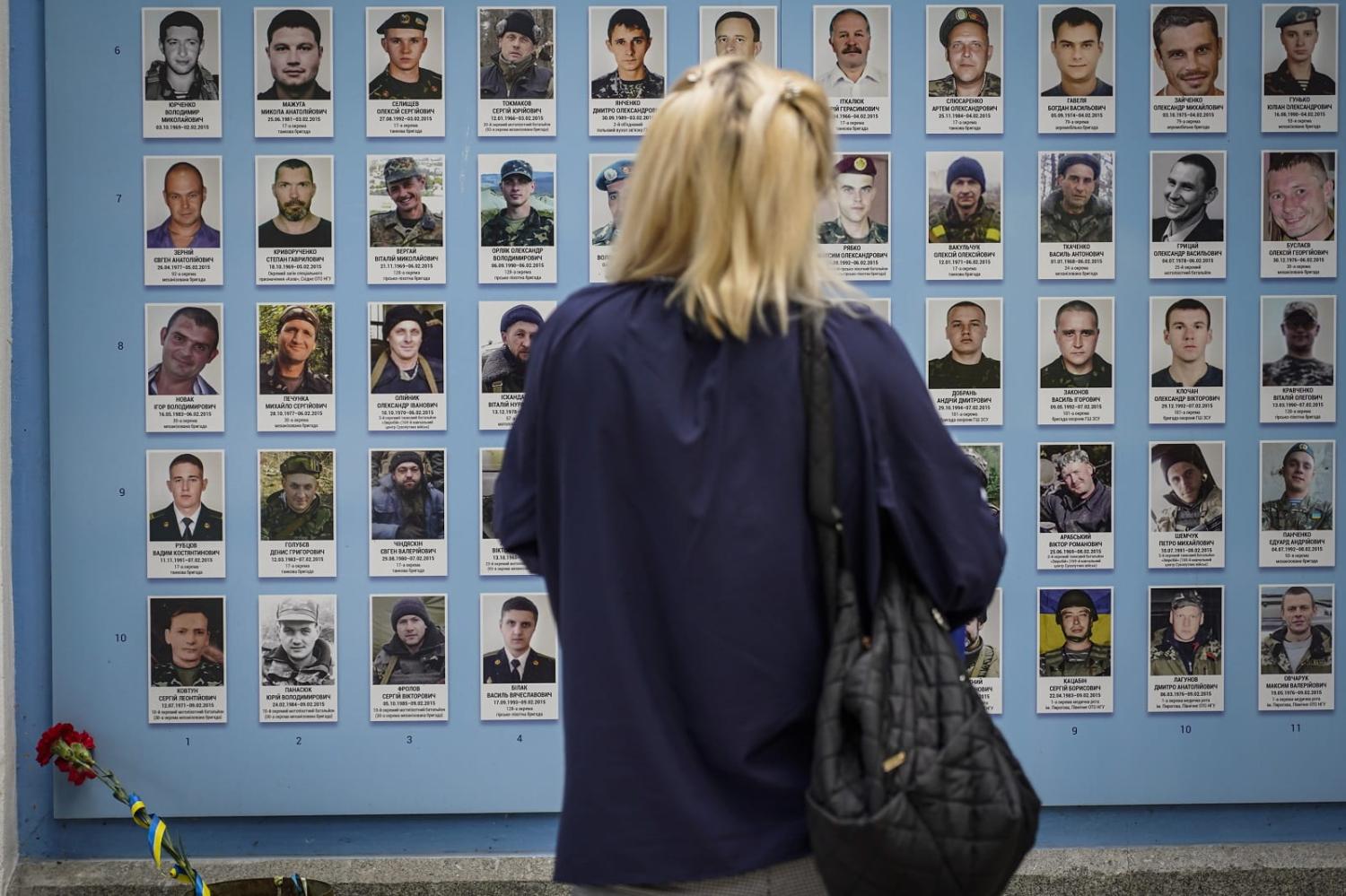It is 800 days since Russia’s invasion of Ukraine when I sit with Yevhen Hlibovytsky in a small café near the national public broadcaster in Kyiv. Australia’s Defence Minister Richard Marles has just wrapped up a flying visit to Ukraine to deliver a further grant of $100 million in military aid. Air raid warnings are frequent again, even as we talk, though with no apparent follow-up of missiles blasting the capital as they did last May when just five days passed without a strike piercing air defences.
The European spring is breaking, and Kyiv is abundant with flowering chestnut trees. The perfumed thaw, however, is blighted by the recent squandered lives of Ukrainian troops 500 kilometres to the east. This resolute army has waited vainly for the armaments needed to match the Russian winter onslaught. These weapons, now en route after months of crippling delay through US Congressional bickering and European dithering rebuked by French President Emmanuel Macron, might have saved many Ukrainian lives.
Hlibovytsky is a political scientist, one of Ukraine’s leading entrepreneurial public intellectuals, and a founder in October 2023 of the Frontier Institute. The new Kyiv-based think tank was established to do the urgent thinking for which nobody else in Ukraine has the time or additional energy. “We’re trying to build the cornerstones for policy to make Ukraine ready once the war is over,” he says. “Government and civil society are overburdened, and we’re the only ones doing this systematically.”
All wars end, but like Ukraine’s stunning early battlefield success, war rapidly generates change that appals or inspires. Here, innovation breaks musty perceptions and archaic frameworks. Just two years ago, drones were being crowd-funded for Ukraine. Last year, according to Hlibovytsky, Ukraine produced around a million battlefield drones, “and this year, we can expect perhaps 2–3 million”. Through cyber innovation and steel manufacture, Ukraine is building what might be Europe’s most formidable arms industry, never mind her most battle-forged army.

Meanwhile, Russian seizure of the east has smashed Czarist and Soviet-era infrastructure, threatening to return the Donbas “to what we called in the 17th century the Wild Steppe,” says Hlibovytsky. The delay in shipments of artillery shells and air defence weapons placed Ukrainian soldiers at least at a 1-to-7 disadvantage against their adversaries through winter, leaving their lines open to incessant pummelling, with single strikes from gliding Russian “dumb” bombs wiping out whole units at a blow.
With an air and artillery dominance directly resulting from sluggish rearmament supplies from allies, Russia has reinvigorated heavy airborne attacks on cities and towns to the east and south. In places such as Kharkiv and Odesa, Ukrainian cities of industry and export, Russian missiles are blasting energy and utility infrastructure, methodically reducing piece-by-piece Ukrainian civilians’ capacity to bear the next winter of 2024/25, and weakening existing lines of defence.
The atrocity ledger cannot be precise, but at 70,000, there are more Ukrainian amputees than Britain suffered in the First World War. Millions of children have broken childhoods – shattered homes, dead friends, the terror of daily air raids, destroyed schools, and bleak memories of Russian forces marauding and pillaging through their villages. They also have fathers and grandfathers now holding the lines in trench warfare who are returning on home leave with unprecedented levels of PTSD, comparable to those who endured the artillery bombardments of the Somme (Hlibovytsky’s own 73-year-old father is now a two-year veteran volunteer).
In an age of backsliding democratic government, the contrast between the piecemeal approach to arms support for Ukraine and the two trillion dollars (or US$300 million per day) spent on supposedly democratising state-building, defence, and social transformation in Afghanistan is stunning. Yet since the fall of the Soviet Union and three ground-swelled democratic revolutions, the trajectory of democracy in Ukraine has only been one of a steady rise over three decades.
Ukraine’s press freedom has increased despite Russian assault and disinformation warfare. Ukraine is the willing sentinel at Europe’s eastern gate against Putin’s increasingly aggressive and volatile posture towards EU coherence and governance-by-consent. Ukraine has even despatched troops to the Sahel to counter Russia’s military spoliation of US and French peace-building and conflict containment efforts across Africa’s desert north.

Yet allied policy has been obsessed with the deterrence of Russia’s war of aggression. It treats Ukraine as a by-product of that policy instead of the main game, only to see Russia’s economy feed from the corpse of Europe’s post-Second World War peace dividend. At a Lowy Institute presentation in April, retired Australian Major-General Mick Ryan, recently returned from Ukraine, urged that Ukraine’s allies pivot from a policy of “help Ukraine defend itself against Russia” to one of defeating Russia decisively in Ukraine.
Equally, allied countries must pivot from consistently frustrated policies that focus on Russian containment and achieving points of leverage (a frustration with Putin’s management, which shows no signs of respite). The switch must be one that they can most control – a successful Ukrainian democracy that can fight with both hands, even while beginning to recover. A functionally effective Ukraine-first doctrine would actually serve as the best counter-Russia doctrine.
Aside from providing predictability in lines of supply, Ukraine-centric policies must focus on a post-war Ukraine with robust institutions. It already has one of the world’s most battle-hardened armies protecting Europe’s flank, thriving innovation, and a cutting-edge weapons production that has bloodied the Russian Black Sea fleet, not to mention a thriving, if bruised, democracy.
A pronounced Marshall Plan-like rebuilding program for people and infrastructure would hearten and strengthen our democratic ally. Most starkly, Ukraine’s allies must contemplate during this fighting season the very worst: what “losing” Ukraine through Russia’s current military dominance, a handicapped allied weapons support, and Ukrainian despair and anger at the human cost to their country would mean for arms control and the deterrence of wars of aggression, international laws and norms, global food and energy supply chains, and democratic solidarity.
Hlibovytsky’s vision for the Frontier Institute is grand but pragmatic, given the current track record of Ukraine’s allies: to describe the post-war shape of Ukrainian democracy within the region, and its gravitational pull for other post-Soviet states from within the orbit of the European ecosystem. “Ukraine can eventually be a donor state, having a kind of USAID for former Soviet states, exerting soft-power status,” he says. “This is the crossroads. This is why we call ourselves the Frontier Institute. We’ve learned to live with a deficit of security, while the developed world is just re-discovering this.”

